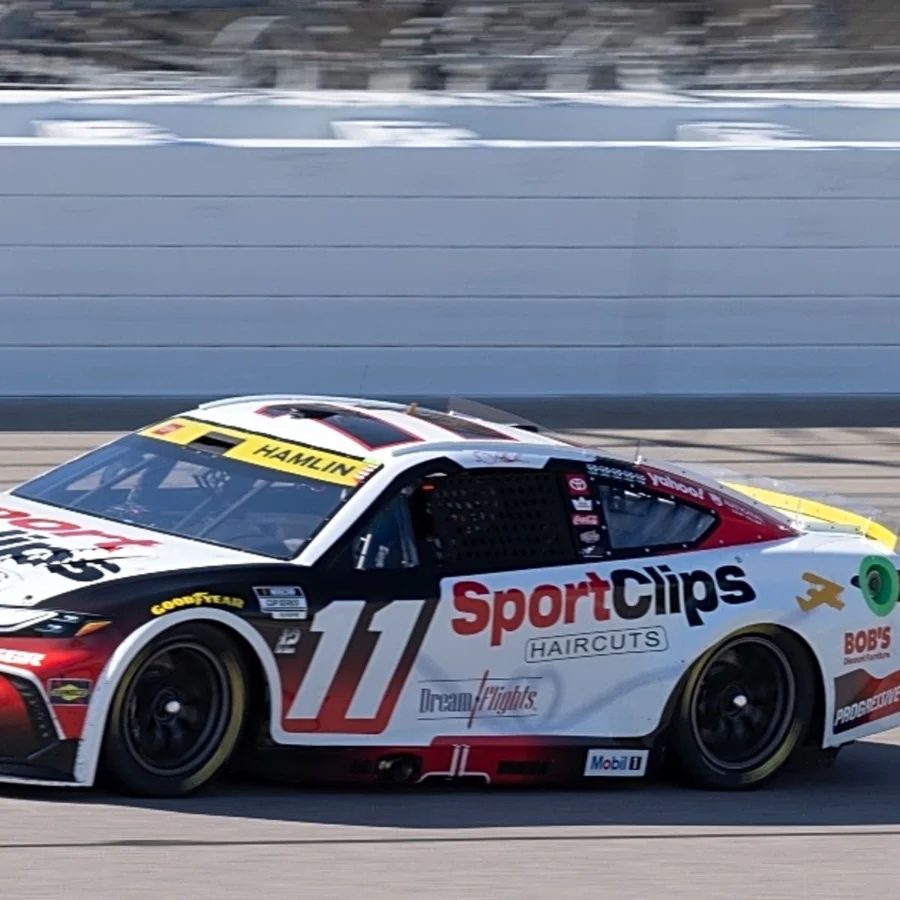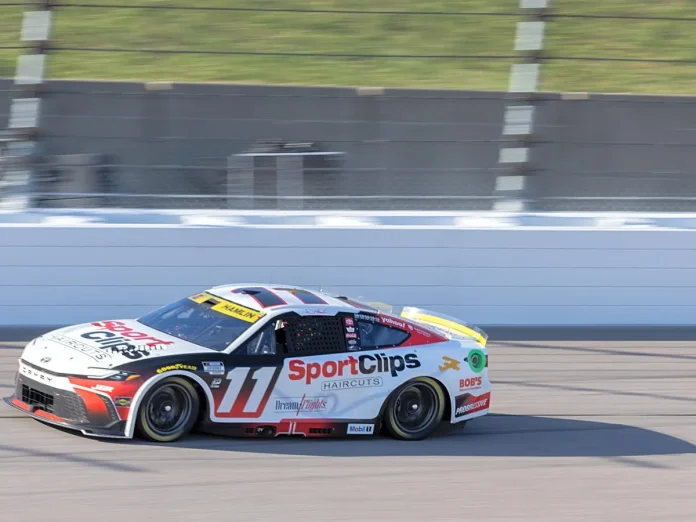Denny Hamlin’s Kansas race controversy at the Hollywood Casino 400 has led to heated debate, most notably involving NASCAR legend Dale Earnhardt Jr., after Hamlin’s late-race contact with Bubba Wallace and the dramatic win by Chase Elliott. The incident, which cost Hamlin and Wallace a potential victory, raised questions about driver loyalties and decision-making under pressure.
High-Stakes Finish at the Hollywood Casino 400
The closing laps of the Hollywood Casino 400 at Kansas produced a compelling showdown as Denny Hamlin pressed hard to secure victory for Joe Gibbs Racing, despite his role as co-owner of 23XI Racing, which fields Bubba Wallace’s car. As Hamlin fought Wallace for the lead, the two made contact, which ultimately paved the way for Chase Elliott to seize a last-second win. The altercation between Hamlin and Wallace immediately sparked conversation about the complicated position Hamlin faced—balancing his competitive drive with business partnerships in the sport.
Dale Earnhardt Jr.’s Analysis and Criticism
Among those analyzing Hamlin’s actions was Dale Earnhardt Jr., who offered a nuanced critique of Hamlin’s strategy. Earnhardt highlighted his admiration for Hamlin’s determination to win, but felt the situation required a different approach:
“I like Denny going for it. I think he could have done it differently to not let someone else win,”
Dale Earnhardt Jr. said on the Dale Jr. Download.
“Putting the 23 in the wall, even though Denny gives him a car length and a half, Denny knows how the aero works. I don’t know truly if the 23 getting into the wall is all Denny or a little bit of both of them being just… I think Bubba gets to that point and goes ‘sh*t, this is, we’re f*cked’ and maybe he does hammer the gas.”
– Dale Earnhardt Jr., Host and former driver

Aftermath and Driver Reactions
Following the event, Bubba Wallace displayed clear frustration, driving past Hamlin and giving him a rude gesture. The fallout led many to speculate on how Hamlin might reflect on his strategy and the outcome, particularly in light of his unique position balancing competitive priorities and internal team loyalties.
Earnhardt’s Perspective on Alternate Outcomes
Reflecting on the Denny Hamlin Kansas race controversy, Earnhardt questioned whether Hamlin might have chosen a different course of action if given another chance, suggesting:
“I think that in the moment it was maybe hard for Denny to admit,”
Earnhardt said.
“But I bet you Thursday or Friday or even Sunday morning at the Roval, would he privately trade you a 23 victory for the obvious end result here? I think he would.”
– Dale Earnhardt Jr., Host and former driver
Earnhardt remained consistent in his view that Hamlin’s approach left room for improvement. He believed Hamlin could have challenged for the win without forcing Wallace into the wall, offering a more respectful race and a potentially better outcome for both drivers.
“I like him going for it, man, but I think he could have done it a little differently and still been able to get out of the car and look at his crew and go, ‘Hey, I went for it without wrecking both of us,’”
Earnhardt said.
“‘I went for it without taking either of us. I went for it yet still gave us and the 23 or the 23 a shot and not letting a Chevrolet go through and win the race.’”
– Dale Earnhardt Jr., Host and former driver
The Broader Impact on NASCAR’s Competitive Landscape
The Denny Hamlin Kansas race controversy underscores the complex dynamics that arise in NASCAR, where driver relationships, ownership roles, and team alliance can complicate race-day decisions. As debate continues, figures like Chase Elliott, Bubba Wallace, and Dinny Hamlin remain central to discussions about sportsmanship and competitive priorities, with Earnhardt’s comments adding further weight to the scrutiny. All involved—Joe Gibbs Racing, 23XI, and fans—will be watching closely as Hamlin and Wallace move forward, with the incident likely to influence how similar situations are navigated in the future.


